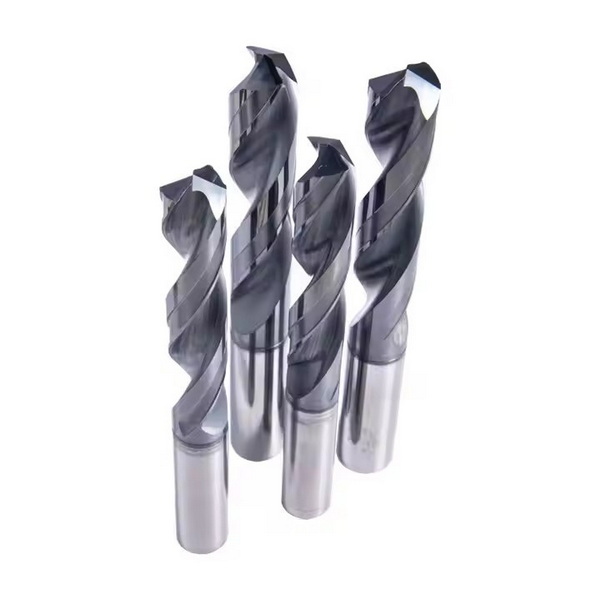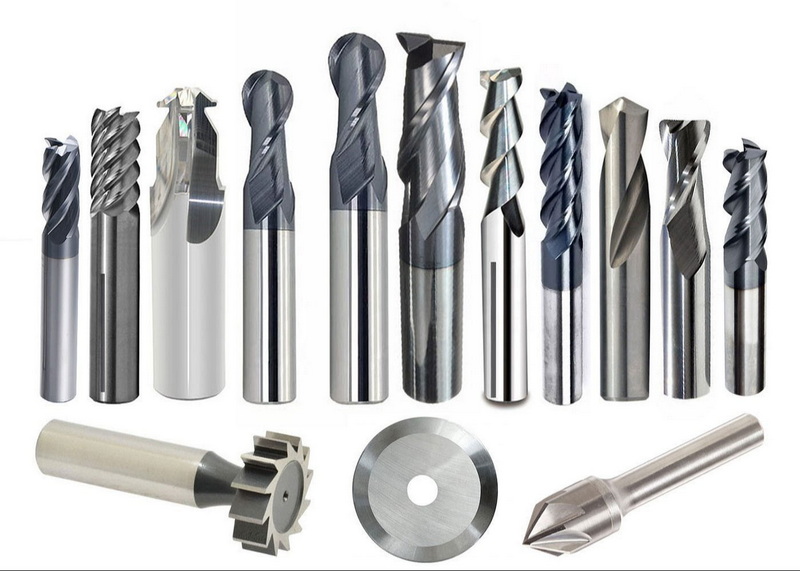Content Menu
● Introduction to Tungsten Carbide
● How Is "Strength" Measured?
● Materials Stronger Than Tungsten Carbide
>> Diamond
>> Cubic Boron Nitride (CBN)
>> Silicon Carbide (SiC)
>> Titanium Carbide (TiC)
>> Graphene
>> Carbon Nanotubes
>> Boron Carbide
>> Superhard Materials: Lonsdaleite, Aggregated Diamond Nanorods, and More
● Comparative Table: Tungsten Carbide vs. Stronger Materials
● Applications of Super-Strong Materials
● Detailed Properties and Advantages of Materials Stronger Than Tungsten Carbide
>> Diamond
>> Cubic Boron Nitride (CBN)
>> Silicon Carbide (SiC)
>> Titanium Carbide (TiC)
>> Graphene and Carbon Nanotubes
>> Boron Carbide
>> Emerging Superhard Materials
● Future Trends and Research in Superhard Materials
● Environmental and Economic Considerations
● Expanded Applications of Super-Strong Materials
● Conclusion
● FAQ: Five Key Questions About Stronger-Than-Tungsten-Carbide Materials
>> 1. What is the hardest material known to science?
>> 2. Why is tungsten carbide so widely used if harder materials exist?
>> 3. How does silicon carbide compare to tungsten carbide?
>> 4. Can graphene or carbon nanotubes replace tungsten carbide in tools?
>> 5. What are the main drawbacks of materials harder than tungsten carbide?
● Citations:
Tungsten carbide is renowned for its incredible hardness and durability, making it a staple in industrial cutting tools, abrasives, and jewelry. Yet, as technology and materials science advance, new substances have emerged that surpass even tungsten carbide in strength, hardness, or performance in specialized applications. This article explores what is stronger than tungsten carbide, comparing their properties, uses, and the science behind their superior performance.

Introduction to Tungsten Carbide
Tungsten carbide (WC) is a compound formed by combining tungsten and carbon. It is celebrated for its:
- Hardness: 8.5–9 on the Mohs scale, nearly as hard as diamond.
- Compressive Strength: Up to 2683 MPa, maintaining strength even at high temperatures.
- Wear Resistance: Exceptional, making it ideal for cutting, drilling, and abrasive tools.
- Density: 15.6 g/cm³, giving it a substantial, heavy feel.
However, tungsten carbide is also brittle, meaning it is more likely to shatter under impact compared to metals like titanium. This trade-off between hardness and toughness is central to understanding how other materials can surpass tungsten carbide in certain performance metrics.
How Is "Strength" Measured?
"Strength" is a multifaceted concept in materials science. The most relevant properties include:
- Hardness: Resistance to scratching or indentation (Mohs, Vickers, or GPa).
- Tensile Strength: Maximum stress a material can withstand when stretched.
- Compressive Strength: Resistance to being crushed.
- Toughness: Ability to absorb energy and plastically deform without fracturing.
- Elastic Modulus: Stiffness or resistance to elastic deformation.
No single material excels in all these categories. For example, diamond is the hardest material but is brittle, while titanium is tough but less hard.
Materials Stronger Than Tungsten Carbide
Diamond
Diamond is the hardest known natural material, scoring a perfect 10 on the Mohs scale and reaching up to 100 GPa in Vickers hardness. Its atomic structure—each carbon atom bonded tetrahedrally to four others—creates an incredibly rigid lattice.
- Hardness: 10 (Mohs), ~100 GPa (Vickers)
- Toughness: Low (brittle)
- Applications: Cutting, drilling, abrasives, electronics
Diamond is unequivocally harder and more wear-resistant than tungsten carbide.
Cubic Boron Nitride (CBN)
Cubic boron nitride is a synthetic material with hardness second only to diamond. It offers:
- Hardness: ~48 GPa (Vickers)
- Thermal Stability: Higher than diamond, especially with ferrous metals
- Applications: Precision cutting, grinding wheels
CBN is less reactive with iron, making it superior to diamond for machining steel alloys.
Silicon Carbide (SiC)
Silicon carbide is a ceramic with a Mohs hardness of 9.5, surpassing tungsten carbide (8.5–9). It also excels in:
- Thermal Stability: Outstanding at high temperatures
- Chemical Resistance: Superior to tungsten carbide
- Applications: High-wear, high-temperature, and corrosive environments
Titanium Carbide (TiC)
Titanium carbide offers higher hardness than tungsten carbide (28–35 GPa vs. 18–22 GPa). It is:
- Harder: Mohs 9–9.5
- Less Tough: More brittle than tungsten carbide
- Applications: Cutting tools, wear-resistant coatings
Graphene
Graphene is a single layer of carbon atoms arranged in a hexagonal lattice. It is the strongest material ever tested:
- Tensile Strength: 125 GPa (100x stronger than steel)
- Elastic Modulus: 1.1 TPa
- Applications: Electronics, composite materials, sensors
Graphene is not used in bulk structural applications yet, but its mechanical properties are unmatched.
Carbon Nanotubes
Carbon nanotubes are cylindrical molecules with exceptional strength:
- Tensile Strength: 50–200 GPa
- Elastic Modulus: Up to 1 TPa
- Applications: Aerospace, nanotechnology, composites
Like graphene, their practical use is limited by manufacturing challenges.
Boron Carbide
Boron carbide is a superhard ceramic:
- Hardness: 9.5 (Mohs)
- Applications: Armor, abrasives, nuclear reactors
It is lighter and harder than tungsten carbide, though more brittle.
Superhard Materials: Lonsdaleite, Aggregated Diamond Nanorods, and More
- Lonsdaleite: A hexagonal form of diamond, predicted to be up to 58% harder than conventional diamond.
- Aggregated Diamond Nanorods: Lab-created material, harder than natural diamond.
- Rhenium Diboride (ReB₂): A synthetic superhard material with high incompressibility.

Comparative Table: Tungsten Carbide vs. Stronger Materials
| Material | Hardness (Mohs) | Vickers Hardness (GPa) | Tensile Strength (GPa) | Notable Properties |
| Tungsten Carbide | 8.5–9 | 18–22 | ~0.7 | Hard, brittle, wear-resistant |
| Diamond | 10 | ~100 | ~2.8 | Hardest natural material, brittle |
| Cubic Boron Nitride | 9.5 | ~48 | ~0.9 | High thermal stability, hard |
| Silicon Carbide | 9.5 | ~25–30 | ~0.4 | High temp/chemical resistance |
| Titanium Carbide | 9–9.5 | 28–35 | ~0.5 | Hard, less tough than WC |
| Graphene | — | — | 125 | Strongest material, 2D, flexible |
| Carbon Nanotubes | — | — | 50–200 | Highest tensile strength, lightweight |
| Boron Carbide | 9.5 | ~30 | ~0.5 | Lightweight, hard, brittle |
| Lonsdaleite | >10 | >100 | — | Harder than diamond (theoretical) |
Applications of Super-Strong Materials
- Diamond: Industrial cutting, drilling, precision machining, electronics, jewelry.
- Cubic Boron Nitride: Machining of ferrous metals, grinding wheels.
- Silicon Carbide: High-temperature components, abrasives, armor.
- Titanium Carbide: Cutting tools, coatings.
- Graphene & Carbon Nanotubes: Advanced composites, electronics, sensors (emerging).
- Boron Carbide: Ballistic armor, abrasives, neutron absorbers.
Detailed Properties and Advantages of Materials Stronger Than Tungsten Carbide
Diamond
Diamond's unparalleled hardness is due to its strong covalent bonding and tetrahedral crystal structure. Despite its brittleness, advances in synthetic diamond production have enabled the creation of industrial-grade diamonds with enhanced toughness. These synthetic diamonds are used extensively in cutting, grinding, and drilling applications where extreme hardness is required.
Cubic Boron Nitride (CBN)
CBN's thermal stability makes it ideal for machining ferrous metals, which tend to react with diamond at high temperatures. Its chemical inertness and hardness make it a preferred choice for precision grinding and cutting tools in automotive and aerospace industries.
Silicon Carbide (SiC)
SiC's excellent thermal conductivity and resistance to oxidation allow it to perform well in high-temperature environments such as gas turbines and nuclear reactors. Its lightweight nature combined with hardness makes it suitable for armor plating and abrasive materials.
Titanium Carbide (TiC)
TiC is often used as a coating material to improve the wear resistance of cutting tools and dies. Its combination of hardness and toughness, although less than tungsten carbide, provides a balance that is useful in specific industrial applications.
Graphene and Carbon Nanotubes
Graphene and carbon nanotubes represent the frontier of materials science. Their extraordinary tensile strength and flexibility open possibilities for next-generation composites, flexible electronics, and lightweight structural materials. Research is ongoing to overcome manufacturing challenges and scale production.
Boron Carbide
Boron carbide's low density and high hardness make it an excellent material for ballistic armor and abrasive powders. Its neutron absorption properties also find applications in nuclear reactors as control rods and shielding materials.
Emerging Superhard Materials
Materials like lonsdaleite and aggregated diamond nanorods are still largely experimental but promise to push the boundaries of hardness and durability. Their potential applications include ultra-precision machining and protective coatings in extreme environments.
Future Trends and Research in Superhard Materials
The quest for materials stronger than tungsten carbide continues to drive research in nanotechnology, materials synthesis, and computational materials science. Innovations such as doping, composite materials, and novel crystal structures aim to enhance toughness without sacrificing hardness.
Researchers are also exploring environmentally friendly and cost-effective synthesis methods to make superhard materials more accessible for industrial use.
Environmental and Economic Considerations
While superhard materials offer superior performance, their production often involves high energy consumption and costly raw materials. Sustainable manufacturing practices and recycling of superhard materials are areas of growing importance.
Balancing performance with environmental impact and cost remains a key challenge for the widespread adoption of these advanced materials.
Expanded Applications of Super-Strong Materials
Beyond traditional uses, superhard materials are increasingly important in emerging fields such as quantum computing, biomedical devices, and space exploration. Their unique properties enable innovations in sensor technology, implantable devices, and protective coatings for spacecraft.
Conclusion
The landscape of materials stronger than tungsten carbide is diverse and rapidly evolving. From the natural hardness of diamond to the futuristic potential of graphene and carbon nanotubes, these materials offer a spectrum of properties tailored to specific needs.
As research progresses, the integration of superhard materials into everyday technology and industry is expected to grow, driven by demands for higher performance, durability, and sustainability.
Understanding the strengths and limitations of each material helps engineers and scientists select the best option for their applications, ensuring continued innovation and advancement in materials science.

FAQ: Five Key Questions About Stronger-Than-Tungsten-Carbide Materials
1. What is the hardest material known to science?
Diamond is the hardest natural material, with a Mohs hardness of 10 and Vickers hardness of ~100 GPa. However, some synthetic materials like aggregated diamond nanorods and lonsdaleite may be even harder in specific tests.
2. Why is tungsten carbide so widely used if harder materials exist?
Tungsten carbide offers an optimal balance of hardness, toughness, cost, and ease of manufacturing. While diamond and CBN are harder, they are more expensive and brittle, making them less practical for many industrial uses.
3. How does silicon carbide compare to tungsten carbide?
Silicon carbide is harder (Mohs 9.5 vs. 8.5–9), lighter, and more chemically resistant than tungsten carbide. It is preferred in high-wear, high-temperature, or corrosive environments, though it is more brittle.
4. Can graphene or carbon nanotubes replace tungsten carbide in tools?
Not yet. While graphene and carbon nanotubes are incredibly strong, manufacturing them in bulk, usable forms for industrial tools remains a challenge. Research is ongoing for their use in advanced composites.
5. What are the main drawbacks of materials harder than tungsten carbide?
- Brittleness: Harder materials like diamond and ceramics are often more brittle and can fracture under impact.
- Cost: Superhard materials are expensive to produce.
- Manufacturing Limitations: Difficult to process into complex shapes or large components.
Citations:
[1] https://www.meadmetals.com/blog/what-are-the-strongest-metals
[2] https://heegermaterials.com/blog/79_tungsten-carbide-vs-titanium-carbide.html
[3] https://kindle-tech.com/faqs/what-is-a-substitute-for-tungsten-carbide
[4] https://www.forbes.com/sites/startswithabang/2019/06/18/there-are-6-strongest-materials-on-earth-that-are-harder-than-diamonds/
[5] https://www.syalons.com/2024/07/08/silicon-carbide-vs-tungsten-carbide-wear-applications/
[6] https://cncpartsxtj.com/cnc-materials/difference-tungsten-and-tungsten-carbide/
[7] https://www.huanghewhirlwind.com/The-Performance-and-Application-of-Super-hard-Materials.html
[8] https://wisconsinmetaltech.com/10-strongest-metals-in-the-world/
[9] https://carbideprovider.com/tungsten-carbide-20250121/
[10] https://cowseal.com/tungsten-vs-tungsten-carbide/
[11] https://www.samaterials.com/content/the-10-strongest-materials-known-to-man.html
[12] https://en.wikipedia.org/wiki/Superhard_material
[13] https://konecarbide.com/tungsten-vs-tungsten-carbide-differences-explained/
[14] https://cowseal.com/tungsten-vs-tungsten-carbide/
[15] https://www.reddit.com/r/metallurgy/comments/55zffp/looking_for_a_strong_metal_stronger_than_tungsten/
[16] https://www.reddit.com/r/Gemstones/comments/1ahga1f/what_gemstone_other_than_diamond_is_harder_than/
[17] https://www.syalons.com/2024/07/08/silicon-carbide-vs-tungsten-carbide-wear-applications/
[18] https://www.eng-tips.com/threads/tungsten-amp-tungsten-carbide-alternatives.234870/
[19] https://www.justmensrings.com/blogs/justmensrings/what-are-the-differences-between-titanium-and-tungsten
[20] https://www.kennametal.com/us/en/resources/blog/metal-cutting/tungsten-carbide-versus-cobalt-drill-bits.html
[21] https://metalscut4u.com/blog/post/what-are-the-strongest-metals-on-earth.html
[22] https://va-tungsten.co.za/pure-tungsten-vs-tungsten-carbide-whats-the-difference/
[23] https://www.thediamondshop.net/alternative-metals-tungsten-vs-cobalt/
[24] https://www.reddit.com/r/Tools/comments/18yb0p4/whats_the_best_way_to_cut_into_granite_diamond_or/
[25] https://industrialmetalservice.com/metal-university/differentiating-tungsten-carbide-vs-steel-and-other-tooling/
[26] https://www.metalsupermarkets.com/the-strongest-metals/
[27] https://www.thyssenkrupp-materials.co.uk/strongest-metals
[28] https://www.nature.com/articles/s41598-020-78064-0
[29] https://stock.adobe.com/search?k=tungsten+carbide
[30] https://elements.lbl.gov/news/superhard-materials-at-the-nanoscale-smaller-is-better/
[31] https://www.herts.ac.uk/research/ref2021/metal-alternatives-to-tungsten-carbide
[32] https://andre.com.pl/images/download/katalogi/supertwarde_en.pdf
[33] https://stock.adobe.com/search?k=carbide
[34] https://www.dreamstime.com/photos-images/superhard-materials.html
[35] https://www.sciencedirect.com/science/article/pii/S1369702105711597
[36] https://www.retopz.com/57-frequently-asked-questions-faqs-about-tungsten-carbide/
[37] https://cowseal.com/carbide-vs-steel/
[38] https://www.qmseals.com/differences-between-silicon-carbide-and-tungsten-carbide-mechanical-seals
[39] https://www.nature.com/articles/s41524-021-00585-7
[40] https://carbidescrapbuyers.com/is-carbide-stronger-than-steel-2/
[41] https://tuncomfg.com/about/faq/
[42] https://pubs.aip.org/aip/jap/article/125/13/130901/1077470/Myths-about-new-ultrahard-phases-Why-materials
[43] https://www.azom.com/article.aspx?ArticleID=17807
[44] http://kth.diva-portal.org/smash/get/diva2:1641929/FULLTEXT01.pdf
[45] https://www.annualreviews.org/doi/10.1146/annurev-matsci-070115-031649
[46] https://www.nature.com/articles/s41524-019-0226-8
[47] https://en.wikipedia.org/wiki/Tungsten_carbide
[48] https://www.meadmetals.com/blog/what-are-the-strongest-metals
[49] https://shop.machinemfg.com/tungsten-carbide-vs-hard-chrome-whats-the-difference/
















